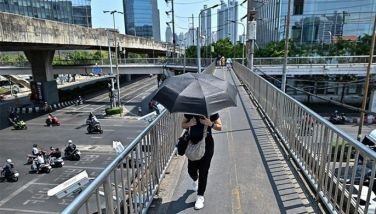Drought hinders California's clean energy goals
SAN FRANCISCO — Already locked in its third dry year, an ongoing drought could complicate California's battle against global warming and make it more expensive, officials said.
For years, dams have been one of California's main sources of clean energy, generating power without spewing greenhouse gases into the air.
The San Francisco Chronicle reported yesterday (http://bit.ly/1qTT5Ej ) that many energy-generating reservoirs are low today, and future dry years could slash the amount of power flowing from the state's hydroelectric dams, putting higher demands on less clean and costlier sources. Less water forces power companies to buy energy from conventional plants that burn natural gas.
"If there's less hydro, the power has to come from somewhere," said Victor Niemeyer of the Electric Power Research Institute. "You have to burn more gas, and that costs more money, all things considered."
California has made strides to fight global warming, as the state pushes utility companies to obtain 33 percent of their electricity from renewable sources by 2020. That includes wind and solar power.
California's emission levels peaked in 2004, but they fell steadily from 2007 to 2011, California Air Resources Board records show. At the drought's onset, emission levels again started to rise, and dry conditions were a factor.
Pacific Gas & Electric operates one of the nation's largest private fleet of hydroelectric dams, with more than 100 reservoirs that feed into 68 generating stations. The drought has left some of the utility's reservoirs in the southern Sierra Nevada at half of their capacity.
PG&E has built the ever-shrinking Sierra's snowpack into its long-range plans as a less reliable source of energy, said Todd Strauss, the utility's senior director of energy policy, planning and analysis. "It's not a negligible effect, but it's manageable," he told the newspaper.
A power plant operator that uses more natural gas, raising its emissions, must make up by buying "allowances" under the state's cap-and-trade system, also running up costs that are passed onto consumers. Companies able to cut emissions can sell their allowances.
Farmers pumping groundwater for irrigation water amid the drought is another source of increased emissions, the newspaper reported. Farmers tap into the power grid or diesel-powered generators that spew pollutants to pump water.
"It makes more trouble for us in a bunch of ways," said Dave Clegern, spokesman for the Air Resources Board. "You've got more greenhouse gas emissions from all that."
- Latest
- Trending






























